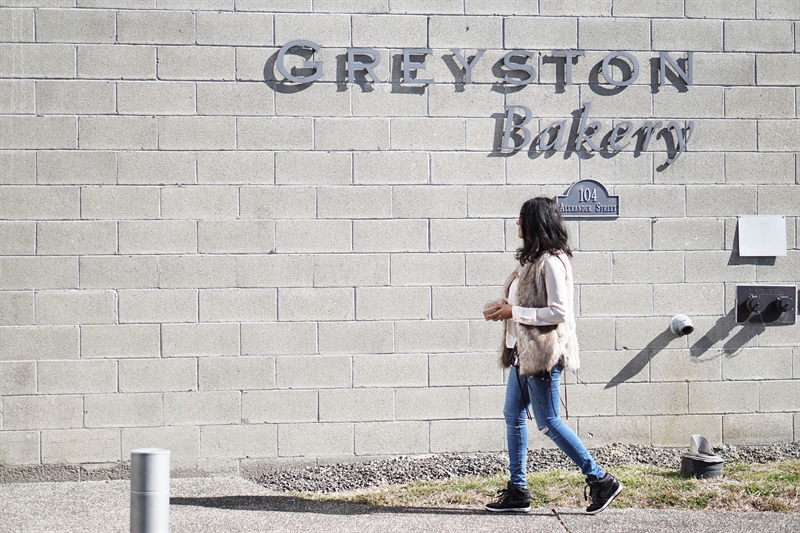4 Best Practices for Second-Chance Hiring
Some strategies that can help organizations make the best hires with the best outcomes. Make second-chance hiring part of your corporate culture

Yonkers, N.Y.–based Greyston Bakery, the primary supplier of brownies for Ben & Jerry’s ice cream, is at the forefront of second-chance hiring, tapping the formerly incarcerated for inclusion in its job pool.
Job candidates at the bakery have an easy application process, filling out a one-page form that asks for a name, phone number and email address. They are also quizzed about their physical abilities such as whether they can they lift a 50-pound bag of flour or sugar. Once the form is filled out, it goes onto a pile arranged in chronological order. The next time a job opening becomes available, the person at the top of the list gets a call.
Since there’s no background check or reference requirement, many of those who apply have prior felony or misdemeanor convictions. Others are homeless or struggle with substance abuse. Today, between 70 and 80 of the more than 100 people who work there, baking brownies and cookies, came from the company’s open hiring policy.
Greyston’s program has been around since the 1980s and is changing lives, according to Joseph D. Kenner, the company’s vice president of programs and partnership. “The first day at orientation is your first day on the job with full benefits. In six to nine months, once your apprenticeship is over, you get access to the union.”
Greyston isn’t the only organization out there taking a chance on formerly incarcerated job seekers, which is a good thing considering that about one in three Americans have some form of criminal record, according to the Center for American Progress. Today, two-thirds of HR professionals surveyed reported that their companies have hired people with a criminal record, with only 14% of respondents saying they would be unwilling to hire such an applicant.
Here are strategies that can help organizations make the best hires with the best outcomes.
Make Second-Chance Hiring Part of Your Corporate Culture
Second-chance hiring is less likely to work if an organization is doing it for the wrong reasons, according to Genevieve Martin, executive director of Dave’s Killer Bread Foundation, which is dedicated to helping businesses adopt second-chance employment. It’s not a program, she said. It’s a business model.
“It shouldn’t be done to be charitable or altruistic. It should be because your organization is committed to hiring the best person for a job,” Martin said, adding that very little has to change from an HR process perspective when hiring a second-chance applicant.
It’s also important to note that — for those companies that have hired second-chance candidates — 82% of hiring managers said the quality of those candidates is as good as, if not better than, someone without a criminal record, said Richard Bronson, CEO of 70 Million Jobs, a job-search site dedicated to this population.
“It turns out this group of people does incredibly well,” Bronson said. “Retention especially is really where the game is won. This population knows they have fewer options so they work harder, and if they find themselves in a relatively good situation, they will do everything they can to stay where they are.”
Provide Training and Work Support
Greyston ticks this box by working directly with local nonprofit Westchester Jewish Community Services to get new hires set up with whatever they may need. “We have someone working with our new employees as part of the orientation process,” Kenner said. “You get introduced to her on your first day. Housing, child support, dealing with social services, transportation, mental health — we want all our employees to know that if they or their families are in crisis, we want to help them out. It’s wraparound support. For us, the biggest issue has been housing. We’ve had employees living in cars, and in that case it’s not uncommon for them to feel ashamed of what they’re going through.”
Employers can use existing employee programs such as employee assistance or wellness offerings. They can also connect with local and state resources to help employees make the transition more easily.
Establish Mentoring
Fewer than 3 in 10 companies have a formal mentoring program, but research has shown that it can improve employee retention rates and boost employee satisfaction. The practice is even more beneficial for second-chance candidates since it can help those employees feel like part of the organization more quickly and help them avoid common job pitfalls, Bronson said. “Even if it’s for a warehouse position, some companies have had success in establishing a buddy system whereby a well-respected worker is given the responsibility to help the new hire acclimate to the new job and help the company maximize the chances for hiring success,” he said.
Default to Transparency — But Keep Employee Details Confidential
You might think that it’s important to let managers and executives know which new hires have prison records, but this is a very bad idea, Martin said. “The HR team should treat that information like a medical condition. Very rarely should anyone know about it,” she said.
That doesn’t mean you don’t talk about the initiative, though, Bronson said. While people have a right to privacy, you still need to let current employees know that you’re embracing second-chance hiring and why you’re doing it.
“Inevitably a workforce will become aware that the HR department is hiring those with criminal records,” said Bronson. “All workers deserve a safe workplace; many will be uncomfortable with such a hiring initiative. The facts regarding hiring those with records are much different than the widely held negative biases. Educate your workforce on why you’re accessing this pool of talent. Let them share ownership [and] they’ll also be sharing pride.”
Source: The Society for Human Resource Management (SHRM). This article is reprinted from shrm.org with permission from SHRM. Copyright 2022, SHRM. All rights reserved.
As the voice of all things work, workers and the workplace, SHRM is the foremost expert, convener and thought leader on issues impacting today’s evolving workplaces. With 300,000-plus HR and business executive members in 165 countries, SHRM impacts the lives of more than 115 million workers and families globally.
Link to the original article at SHRM here: 4 Best Practices for Second-Chance Hiring (shrm.org).
More Relaunch
Subs & Drugs & Rock & Roll, Part 3: 'I'm a Loser (And I'm Not What I Appear To Be)'
Don Fertman reaches bottom as the jelly donut hits the wall. The latest installment of the longtime Subway exec's memoir.
Subs & Drugs & Rock & Roll, Part 2: A Day in the Life
Don Fertman woke up one morning 40 years ago and poured himself a drink, as usual. But the future Subway exec didn't know this day would be far from ordinary.
Subs & Drugs & Rock & Roll, Part 1: With a Little Help From My Friends
Don Fertman, longtime Subway exec, writes about a pivotal moment in his 40 years of sobriety: what happened after he went public about his recovery on "Undercover Boss."
Here's How To Make the Office Holiday Party Recovery-Friendly
Four ways to make your holiday party more inviting to employees who are in recovery, according to the Society for Human Resource Management.
How Can I Be a Sober Ally in the Workplace?
You're not in addiction recovery, but you want to show up for people who are. Great! Here's what that looks like at the office.
Is Alcohol Big in Your Work Culture? Here's How To Sidestep — Or Talk About It
The "Mad Men" era may be over, but some workplaces can still be particularly challenging in recovery. Some pointers on putting your sobriety first.
Your Guide To Hanging Out and Making Friends in College — Sober
Doing college sans drugs and alcohol doesn't have to be a struggle. Some tips on making bonds that'll last and having a blast.
The Benefits of a Recovery-Friendly Workplace
Also called a "recovery-ready workplace," it's a winning proposition for high-quality employers and employees alike.











